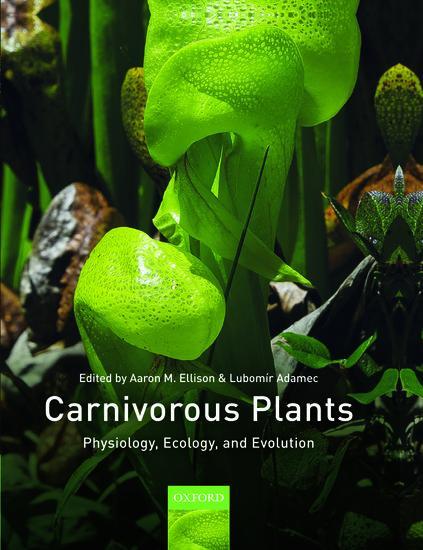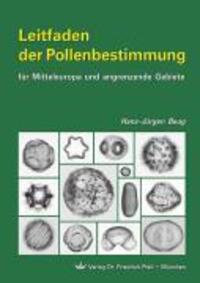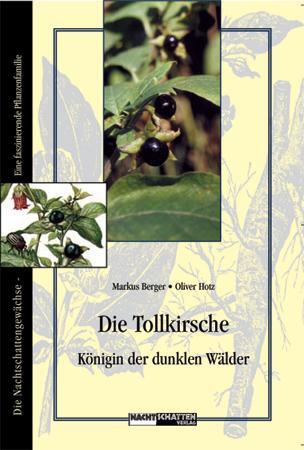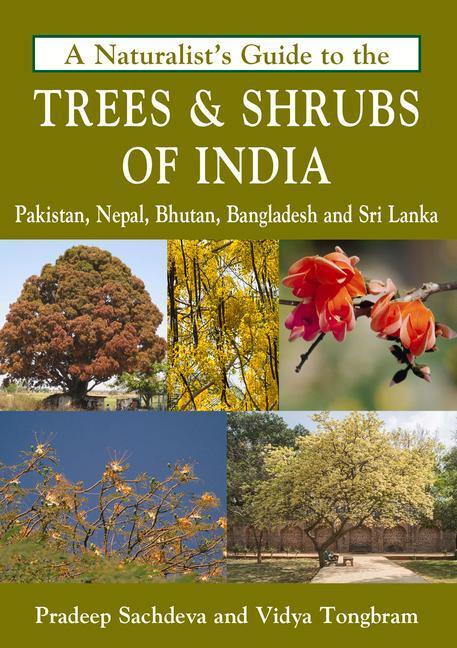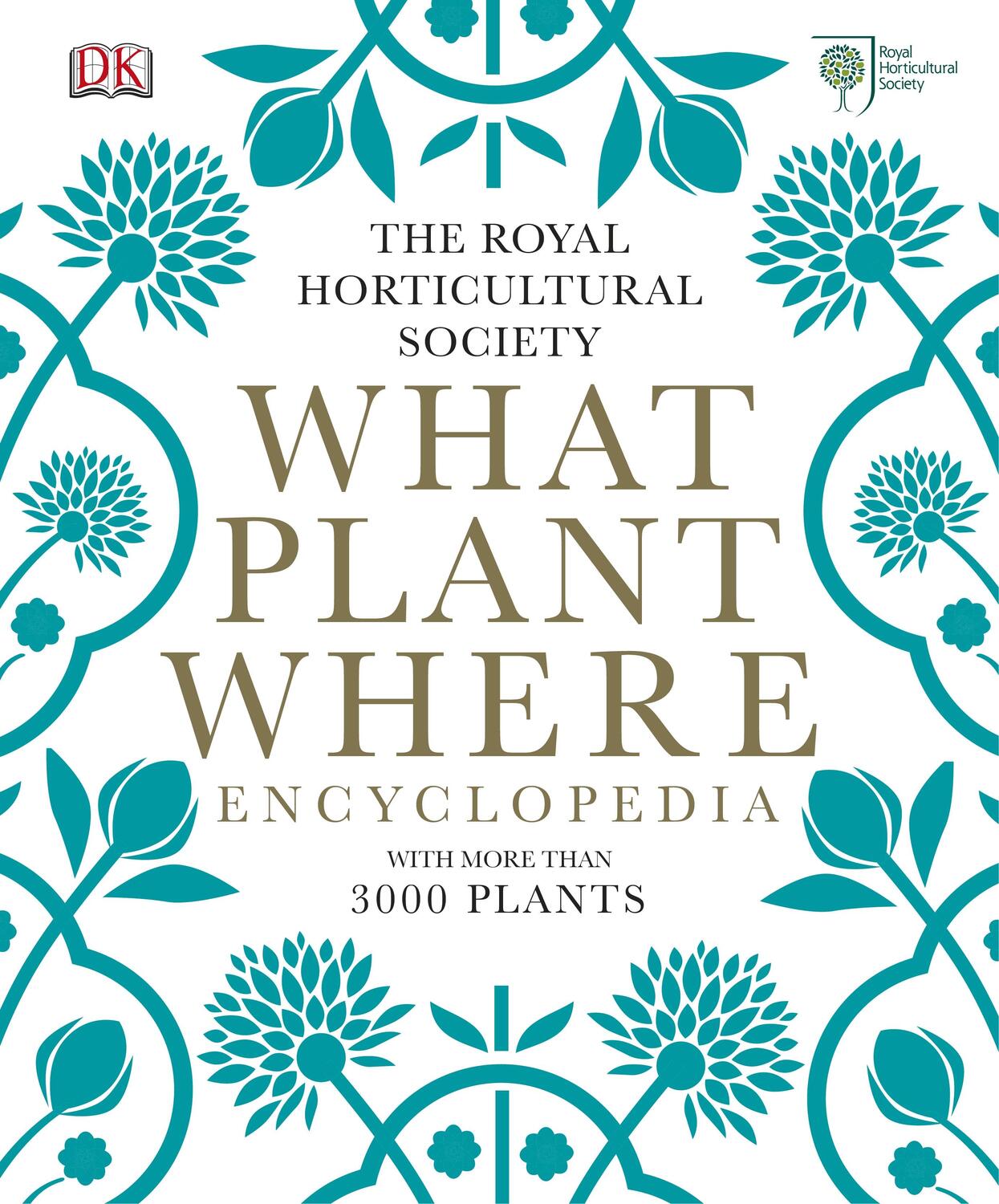Dekorationsartikel gehören nicht zum Leistungsumfang.
Sprache:
Englisch
85,00 €*
Versandkostenfrei per Post / DHL
Aktuell nicht verfügbar
Kategorien:
Beschreibung
This book is a synthesis of the latest research on carnivorous plants, focusing on their physiology, ecology, evolution, and future conservation and research efforts.
This book is a synthesis of the latest research on carnivorous plants, focusing on their physiology, ecology, evolution, and future conservation and research efforts.
Über den Autor
Aaron M. Ellison is the Senior Research Fellow in Ecology at Harvard University, and a semi-professional photographer and writer. He studies the disintegration and reassembly of ecosystems following natural and anthropogenic disturbances; thinks about the relationship between the Dao and the intermediate disturbance hypothesis and reflects on the critical and reactionary stance of Ecology relative to Modernism.
Lubomír Adamec is the Senior Research Scientist in the Section of Plant Ecology of the Institute of Botany CAS at Trebon, Czech Republic, where he has been working since 1986. Since graduating in plant physiology from the Charles University in Prague, Czechoslovakia, he has been studying the ecophysiology of aquatic and wetland plants, especially carnivorous ones: mineral nutrition, photosynthesis, growth traits, Utricularia trap ecophysiology, and biophysics. He is the curator of the world's largest collection of aquatic carnivorous plants, currently including more than 80 species or populations, which is used extensively for research and plant conservation.
Lubomír Adamec is the Senior Research Scientist in the Section of Plant Ecology of the Institute of Botany CAS at Trebon, Czech Republic, where he has been working since 1986. Since graduating in plant physiology from the Charles University in Prague, Czechoslovakia, he has been studying the ecophysiology of aquatic and wetland plants, especially carnivorous ones: mineral nutrition, photosynthesis, growth traits, Utricularia trap ecophysiology, and biophysics. He is the curator of the world's largest collection of aquatic carnivorous plants, currently including more than 80 species or populations, which is used extensively for research and plant conservation.
Inhaltsverzeichnis
- Part I: Overview
- 1: Aaron M. Ellison and Lubomír Adamec: Introduction
- 2: J. Stephen Brewer and Jan Schlauer: Biogeography and habitats of carnivorous plants
- 3: Andreas Fleischmann, Jan Schlauer, Stephen A. Smith, and Thomas J. Givnish: Evolution of carnivory in angiosperms
- Part II: Systematics and evolution of carnivorous plants
- 4: Andreas Fleischmann, Adam T. Cross, Robert Gibson, Paulo M. Gonella, and Kingsley W. Dixon: Systematics and evolution of Droseraceae
- 5: Charles Clarke, Jan Schlauer, Jonathan Moran, and Alastair Robinson: Systematics and evolution of Nepenthes
- 6: Andreas Fleischmann and Aymeric Roccia: Systematics and evolution of Lentibulariaceae: I. Pinguicula
- 7: Andreas Fleischmann: Systematics and evolution of Lentibulariaceae: II. Genlisea
- 8: Richard W. Jobson, Paulo C. Baleeiro, and Cástor Guisande: Systematics and evolution of Lentibulariaceae: III. Utricularia
- 9: Robert F.C. Naczi: Systematics and evolution of Sarraceniaceae
- 10: Adam T. Cross, Maria Paniw, André Vito Scatigna, Nick Kalfas, Bruce Anderson, Thomas J. Givnish, and Andreas Fleischmann: Systematics and evolution of small genera of carnivorous plants
- 11: Tanya Renner, Tianying Lan, Kimberly M. Farr, Enrique Ibarra-Laclette, Luis Herrera- Esrella, Stephan C. Schuster, Mitsuyasu Hasebe, Kenji Fukushima, and Victor A. Albert: Carnivorous plant genomes
- Part III: Physiology, form, and function
- 12: John D. Horner, Bartosz J. Plachno, Ulrike Bauer, and Bruno Di Giusto: Attraction of prey
- 13: Bartosz J. Plachno and Lyudmila E. Muravnik: Functional anatomy of carnivorous traps
- 14: Simon Poppinga, Ulrike Bauer, Thomas Speck, and Alexander G. Volkov: Motile traps
- 15: Ulrike Bauer, Reinhard Jetter, and Simon Poppinga: Non-motile traps
- 16: Ildikó Matuiková, Andrej Pavlovic, and Tanya Renner: Biochemistry of prey digestion and nutrient absorption
- 17: Lubomír Adamec and Andrej Pavlovic: Mineral nutrition of terrestrial carnivorous plants
- 18: Thomas J. Givnish, K. William Sparks, Steven J. Hunter, and Andrej Pavlovic: Why are plants carnivorous? Cost/benefit analysis, whole-plant growth, and the context- specific advantages of botanical carnivory
- 19: Lubomír Adamec: Ecophysiology of aquatic carnivorous plants
- 20: Laurent Legendre and Douglas W. Darnowski: Biotechnology with carnivorous plants
- Part IV: Ecology
- 21: Douglas W. Darnowski, Ulrike Bauer, Marcos Méndez, John D. Horner, and Bartosz J. Plachno: Prey selection and specialization by carnivorous plants
- 22: Adam T. Cross, Arthur R. Davis, Andreas Fleischmann, John D. Horner, Andreas Jürgens, David J. Merritt, Gillian L. Murza, and Shane R. Turner: Reproductive biology and prey-pollinator conflicts
- 23: Leonora S. Bittleston: Commensals of Nepenthes pitchers
- 24: Thomas E. Miller, William E. Bradshaw, and Christina M. Holzapfel: Pitcher-plant communities as model systems for addressing fundamental questions in ecology and evolution
- 25: Dagmara Sirová, Jirí Bárta, Jakub Borovec, and Jaroslav Vrba: The Utricularia-associated microbiome: composition, function, and ecology
- 26: Jonathan A. Moran, Bruce Anderson, Lijin Chin, Melinda Greenwood, and Charles Clarke: Nutritional mutualisms of Nepenthes and Roridula
- Part V: The future of carnivorous plants
- 27: Charles Clarke, Adam Ross, and Barry Rice: Conservation of carnivorous plants
- 28: Matthew C. Fitzpatrick and Aaron M. Ellison: Estimating the exposure of carnivorous plants to rapid climatic change
- 29: Aaron M. Ellison and Lubomír Adamec: The future of research with carnivorous plants
Details
| Erscheinungsjahr: | 2019 |
|---|---|
| Fachbereich: | Allgemeines |
| Genre: | Biologie |
| Rubrik: | Naturwissenschaften & Technik |
| Thema: | Lexika |
| Medium: | Taschenbuch |
| Seiten: | 552 |
| Inhalt: | Kartoniert / Broschiert |
| ISBN-13: | 9780198833727 |
| ISBN-10: | 0198833725 |
| Sprache: | Englisch |
| Einband: | Kartoniert / Broschiert |
| Autor: | Ellison, Aaron |
| Redaktion: |
Ellison, Aaron
Adamec, Lubomir |
| Hersteller: | Oxford University Press, USA |
| Maße: | 246 x 187 x 30 mm |
| Von/Mit: | Aaron Ellison (u. a.) |
| Erscheinungsdatum: | 15.04.2019 |
| Gewicht: | 1,219 kg |
Über den Autor
Aaron M. Ellison is the Senior Research Fellow in Ecology at Harvard University, and a semi-professional photographer and writer. He studies the disintegration and reassembly of ecosystems following natural and anthropogenic disturbances; thinks about the relationship between the Dao and the intermediate disturbance hypothesis and reflects on the critical and reactionary stance of Ecology relative to Modernism.
Lubomír Adamec is the Senior Research Scientist in the Section of Plant Ecology of the Institute of Botany CAS at Trebon, Czech Republic, where he has been working since 1986. Since graduating in plant physiology from the Charles University in Prague, Czechoslovakia, he has been studying the ecophysiology of aquatic and wetland plants, especially carnivorous ones: mineral nutrition, photosynthesis, growth traits, Utricularia trap ecophysiology, and biophysics. He is the curator of the world's largest collection of aquatic carnivorous plants, currently including more than 80 species or populations, which is used extensively for research and plant conservation.
Lubomír Adamec is the Senior Research Scientist in the Section of Plant Ecology of the Institute of Botany CAS at Trebon, Czech Republic, where he has been working since 1986. Since graduating in plant physiology from the Charles University in Prague, Czechoslovakia, he has been studying the ecophysiology of aquatic and wetland plants, especially carnivorous ones: mineral nutrition, photosynthesis, growth traits, Utricularia trap ecophysiology, and biophysics. He is the curator of the world's largest collection of aquatic carnivorous plants, currently including more than 80 species or populations, which is used extensively for research and plant conservation.
Inhaltsverzeichnis
- Part I: Overview
- 1: Aaron M. Ellison and Lubomír Adamec: Introduction
- 2: J. Stephen Brewer and Jan Schlauer: Biogeography and habitats of carnivorous plants
- 3: Andreas Fleischmann, Jan Schlauer, Stephen A. Smith, and Thomas J. Givnish: Evolution of carnivory in angiosperms
- Part II: Systematics and evolution of carnivorous plants
- 4: Andreas Fleischmann, Adam T. Cross, Robert Gibson, Paulo M. Gonella, and Kingsley W. Dixon: Systematics and evolution of Droseraceae
- 5: Charles Clarke, Jan Schlauer, Jonathan Moran, and Alastair Robinson: Systematics and evolution of Nepenthes
- 6: Andreas Fleischmann and Aymeric Roccia: Systematics and evolution of Lentibulariaceae: I. Pinguicula
- 7: Andreas Fleischmann: Systematics and evolution of Lentibulariaceae: II. Genlisea
- 8: Richard W. Jobson, Paulo C. Baleeiro, and Cástor Guisande: Systematics and evolution of Lentibulariaceae: III. Utricularia
- 9: Robert F.C. Naczi: Systematics and evolution of Sarraceniaceae
- 10: Adam T. Cross, Maria Paniw, André Vito Scatigna, Nick Kalfas, Bruce Anderson, Thomas J. Givnish, and Andreas Fleischmann: Systematics and evolution of small genera of carnivorous plants
- 11: Tanya Renner, Tianying Lan, Kimberly M. Farr, Enrique Ibarra-Laclette, Luis Herrera- Esrella, Stephan C. Schuster, Mitsuyasu Hasebe, Kenji Fukushima, and Victor A. Albert: Carnivorous plant genomes
- Part III: Physiology, form, and function
- 12: John D. Horner, Bartosz J. Plachno, Ulrike Bauer, and Bruno Di Giusto: Attraction of prey
- 13: Bartosz J. Plachno and Lyudmila E. Muravnik: Functional anatomy of carnivorous traps
- 14: Simon Poppinga, Ulrike Bauer, Thomas Speck, and Alexander G. Volkov: Motile traps
- 15: Ulrike Bauer, Reinhard Jetter, and Simon Poppinga: Non-motile traps
- 16: Ildikó Matuiková, Andrej Pavlovic, and Tanya Renner: Biochemistry of prey digestion and nutrient absorption
- 17: Lubomír Adamec and Andrej Pavlovic: Mineral nutrition of terrestrial carnivorous plants
- 18: Thomas J. Givnish, K. William Sparks, Steven J. Hunter, and Andrej Pavlovic: Why are plants carnivorous? Cost/benefit analysis, whole-plant growth, and the context- specific advantages of botanical carnivory
- 19: Lubomír Adamec: Ecophysiology of aquatic carnivorous plants
- 20: Laurent Legendre and Douglas W. Darnowski: Biotechnology with carnivorous plants
- Part IV: Ecology
- 21: Douglas W. Darnowski, Ulrike Bauer, Marcos Méndez, John D. Horner, and Bartosz J. Plachno: Prey selection and specialization by carnivorous plants
- 22: Adam T. Cross, Arthur R. Davis, Andreas Fleischmann, John D. Horner, Andreas Jürgens, David J. Merritt, Gillian L. Murza, and Shane R. Turner: Reproductive biology and prey-pollinator conflicts
- 23: Leonora S. Bittleston: Commensals of Nepenthes pitchers
- 24: Thomas E. Miller, William E. Bradshaw, and Christina M. Holzapfel: Pitcher-plant communities as model systems for addressing fundamental questions in ecology and evolution
- 25: Dagmara Sirová, Jirí Bárta, Jakub Borovec, and Jaroslav Vrba: The Utricularia-associated microbiome: composition, function, and ecology
- 26: Jonathan A. Moran, Bruce Anderson, Lijin Chin, Melinda Greenwood, and Charles Clarke: Nutritional mutualisms of Nepenthes and Roridula
- Part V: The future of carnivorous plants
- 27: Charles Clarke, Adam Ross, and Barry Rice: Conservation of carnivorous plants
- 28: Matthew C. Fitzpatrick and Aaron M. Ellison: Estimating the exposure of carnivorous plants to rapid climatic change
- 29: Aaron M. Ellison and Lubomír Adamec: The future of research with carnivorous plants
Details
| Erscheinungsjahr: | 2019 |
|---|---|
| Fachbereich: | Allgemeines |
| Genre: | Biologie |
| Rubrik: | Naturwissenschaften & Technik |
| Thema: | Lexika |
| Medium: | Taschenbuch |
| Seiten: | 552 |
| Inhalt: | Kartoniert / Broschiert |
| ISBN-13: | 9780198833727 |
| ISBN-10: | 0198833725 |
| Sprache: | Englisch |
| Einband: | Kartoniert / Broschiert |
| Autor: | Ellison, Aaron |
| Redaktion: |
Ellison, Aaron
Adamec, Lubomir |
| Hersteller: | Oxford University Press, USA |
| Maße: | 246 x 187 x 30 mm |
| Von/Mit: | Aaron Ellison (u. a.) |
| Erscheinungsdatum: | 15.04.2019 |
| Gewicht: | 1,219 kg |
Warnhinweis

